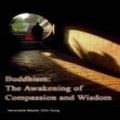The Six Principles of Harmony The Three Conditions are the basis for individual cultivation whereas the Six Principles of Harmony are the basis for group cultivation. The Sangha is a group of four or more people who properly practice the Buddha's teachings together, especially the Six Principles of Harmony. They are: 1. Sharing the same viewpoints or goals, 2. Abiding by the same precepts, 3. Living and practicing together harmoniously, 4. Not quarrelling, 5. Experiencing the inner peace and happiness from practicing together harmoniously and 6. Sharing benefits harmoniously.
Sharing the Same Viewpoints or Goals.
This means mutual understanding or agreement. A group needs to share the same viewpoints of the principles and methods for study and practice. This is the basis for harmonious group cultivation.
If a society is to remain stable, its members need to live in harmony. Only harmony can draw us together in terms of opinions, ideas and our way of life. In other words, being harmonious can minimize the differences in human relations and improve equality. After that, peace and then finally, happiness can be achieved. To obtain happiness we must have a peaceful heart and body. Both Buddhist and worldly teachings emphasize the importance of harmony and respect.
A few years ago I went to Beijing and visited the Forbidden City, where there are three main palaces, the names of which all contain the word harmony. This shows that the early emperors of the Ching Dynasty, the last dynasty, tried to rule the country with harmony. However, the disharmony, which plagued the imperial family at the beginning of this century, ended the dynasty. Therefore, harmony is crucial for lasting peace and happiness.
Buddha Shakyamuni provided innumerable methods to practice but he did not intend that we try them all. We need to find the one most appropriate for us and then remember that the key lies in exclusive pursuit. In ancient times, the Pure Land School adopted three sutras and one sastra, now we emphasize five sutras and one sastra. As stated in an ancient Chinese textbook, "Of all the teaching principles, exclusive pursuit is the most important". Suppose some people like the "Infinite Life Sutra" while others prefer the "Amitabha Sutra." Can these two groups of people merge into one? They may merge, but they cannot practice harmoniously together, for when one half begins to recite the "Infinite Life Sutra," the other half will want to recite the "Amitabha Sutra." In order to create group unity, it will be necessary to set up two separate way places.
This explains why there are so many different way places even though we are all Pure Land practitioners. The same principle applies to choosing sutras with multiple commentaries. Which one will we use? This will result in a further setting up of way places. The same process can even occur when deciding which form of chanting to follow. Some prefer to chant slowly "Namo Amituofo" while others prefer a very fast "Amituofo, Amituofo, Amituofo". It would be very difficult for the two groups to practice harmoniously together.
The people in ancient way places were able to achieve because everyone shared the same viewpoints and goals and practiced the same method without intermingling. Their very atmosphere was conducive to magnificence and peace. Thus, all those who entered naturally gave rise to respect.
Unfortunately, a common situation in modern way places is that the teachings of various schools are intermingled. Contradictions and conflicts are unavoidable, and it will be difficult for practitioners to focus, much less to succeed. So, it becomes evident that "Sharing the same viewpoints or goals" is crucial in a way place. If the people in a group share similar ideas and viewpoints as well as the same interests and objectives, they can remain in harmony and thus form a Sangha. However, they may as well form a separate Sangha if differences arise. Otherwise, there would be conflicts and no one would succeed. By providing an infinite number of methods for cultivation, the Buddha meant to ensure that people of different viewpoints and interests would all be able to succeed in their cultivation. Thus, it is said that all paths lead to the same goal, as all methods are equal. This demonstrates the Buddha's great, compassionate heart, as he never forces anyone to practice one particular method.

